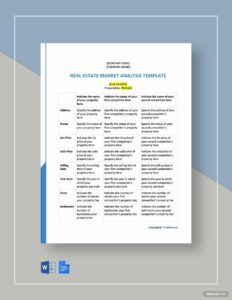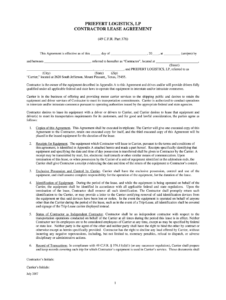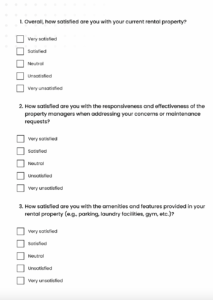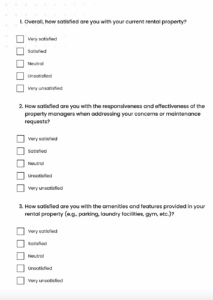Embarking on a commercial lease agreement can often feel like navigating a complex maze. There are so many details to consider, from rental terms and responsibilities to fit-out clauses and renewal options. Before diving headfirst into the binding legal document of a full lease, it’s incredibly helpful to establish a clear, shared understanding of the core terms. This preliminary stage is crucial for both landlords and tenants to ensure they are on the same page, preventing misunderstandings and costly delays down the line.
This is where a Memorandum of Understanding (MOU) steps in as an invaluable tool. Think of it as a handshake on paper, outlining the principal terms of your potential commercial lease. While generally non-binding, an MOU provides a solid framework that guides the subsequent drafting of the formal lease agreement, saving everyone involved time, effort, and often, legal fees. It sets the stage for a smoother, more transparent negotiation process, making the journey to a signed lease agreement far less daunting.
Understanding the Foundation: What a Memorandum of Understanding Means for Your Commercial Lease
A Memorandum of Understanding, or MOU, in the context of a commercial lease, is essentially a preliminary agreement between a prospective landlord and tenant. It’s a document that signals serious intent from both parties to move forward with a lease agreement, outlining the key commercial and operational terms they anticipate including in the final, legally binding lease. While MOUs are typically not legally enforceable contracts for the lease itself, they serve as a powerful declaration of mutual understanding and commitment to negotiate in good faith.
The primary purpose of an MOU is to articulate the fundamental points that both parties have tentatively agreed upon. This ensures that before significant legal resources are expended on drafting a detailed commercial lease, there’s a clear consensus on the big picture items. It acts as a roadmap, guiding the legal teams in preparing the definitive lease document, thereby minimizing the back-and-forth revisions that can lead to increased costs and frustration. For instance, agreeing on the exact premises, the rental amount, and the lease duration early on can prevent major disagreements later.
Core Elements to Include in Your Commercial Lease MOU
When preparing a Memorandum of Understanding for a commercial lease, certain core elements are indispensable. These are the critical points that define the essence of the prospective agreement and set the stage for detailed drafting. Including these ensures that all fundamental aspects are covered, providing clarity and direction for all parties involved.
- Identification of Parties: Clearly state the full legal names of both the prospective landlord and tenant.
- Property Description: A precise description of the commercial premises to be leased, including its address, unit number, and approximate size.
- Proposed Lease Term: The intended duration of the lease, including the proposed commencement and expiration dates.
- Rent Details: The proposed base rent, payment frequency, and any agreed-upon rent review mechanisms or escalations.
- Permitted Use: A clear statement of how the tenant intends to use the commercial premises.
- Maintenance and Repair Responsibilities: An outline of who will be responsible for various aspects of maintenance, repairs, and utilities.
- Options: Any options for renewal, expansion, or early termination that have been discussed.
- Conditions Precedent: Any conditions that must be met before the lease can be finalized, such as obtaining specific permits or financing.
- Special Provisions: Any unique clauses or specific agreements, such as fit-out allowances, signage rights, or exclusivity clauses, should be noted.
Even though it’s generally non-binding regarding the ultimate lease, an MOU carries significant weight psychologically and practically. It builds trust between the landlord and tenant, demonstrating a serious commitment to the deal. It also provides a clear reference point, allowing both parties to reflect on the agreed-upon terms as the final lease is being drafted and reviewed. This structured approach helps in identifying potential sticking points early, enabling proactive problem-solving rather than reactive disputes.
Ultimately, an MOU streamlines the entire leasing process. It acts as a detailed brief for the lawyers, ensuring they understand the commercial intent before they translate it into legal language. This means less time spent on initial drafts that miss the mark and more time focusing on the legal intricacies and protections for both sides.
Streamlining the Process: The Practical Benefits of a Memorandum of Understanding Template Commercial Lease
Utilizing a memorandum of understanding template commercial lease is far more than a mere administrative step; it’s a strategic decision that brings efficiency and transparency to complex negotiations. In a commercial environment where time is money and clarity is paramount, a well-drafted MOU template ensures that both parties can articulate their expectations and commitments in a structured manner, long before the costly legal machinery of a full lease agreement kicks into gear. This proactive approach helps to solidify the deal’s foundations, making the subsequent legal process smoother and more predictable for everyone involved.
One of the most significant advantages of employing an MOU is its ability to save both time and money. By nailing down the principal terms upfront, it dramatically reduces the amount of back-and-forth revisions that are typically required during the drafting of a full lease agreement. Legal fees can quickly accumulate with each round of amendments, so having a clear memorandum of understanding template commercial lease to guide the process means fewer hours billed by lawyers, ultimately resulting in substantial cost savings for both the landlord and the tenant.
Moreover, an MOU serves as an excellent framework for conducting due diligence. It provides a formal document against which both parties can perform their necessary investigations without being fully committed to a binding lease. For instance, a tenant can use the agreed-upon terms in the MOU to secure financing or obtain necessary permits, knowing that the core commercial terms are provisionally agreed. Similarly, a landlord can conduct tenant background checks or credit assessments with a clear understanding of the deal’s parameters. This structured pre-commitment phase minimizes risks for all involved, allowing for a more informed decision before signing the final lease.
Here are some key benefits that highlight why a memorandum of understanding template commercial lease is an indispensable tool:
- Clarity from the Outset: Ensures a shared and unambiguous understanding of the core commercial terms before legal drafting begins.
- Cost Reduction: Significantly reduces legal fees by minimizing revisions and disputes during the formal lease agreement process.
- Time Efficiency: Accelerates the overall negotiation and lease finalization timeline, getting businesses into their new spaces quicker.
- Risk Mitigation: Helps identify and address potential deal-breakers or complex issues early, preventing costly complications later.
- Foundation for Trust: Builds a stronger working relationship between the landlord and tenant, fostered by mutual understanding and good faith.
- Negotiation Aid: Provides a tangible document to refer back to, keeping detailed discussions focused and aligned with initial agreements.
Ultimately, opting to use a memorandum of understanding template commercial lease isn’t just about formality; it’s about smart business practice. It provides a sensible, low-risk way to pave the path toward a successful and mutually beneficial commercial lease. By establishing a clear understanding of expectations and obligations at the outset, both landlords and tenants can navigate the complexities of commercial leasing with greater confidence and efficiency. This foundational step truly sets the stage for a positive long-term relationship and a smooth transition into the new commercial space, minimizing the potential for future disagreements and legal entanglements.



